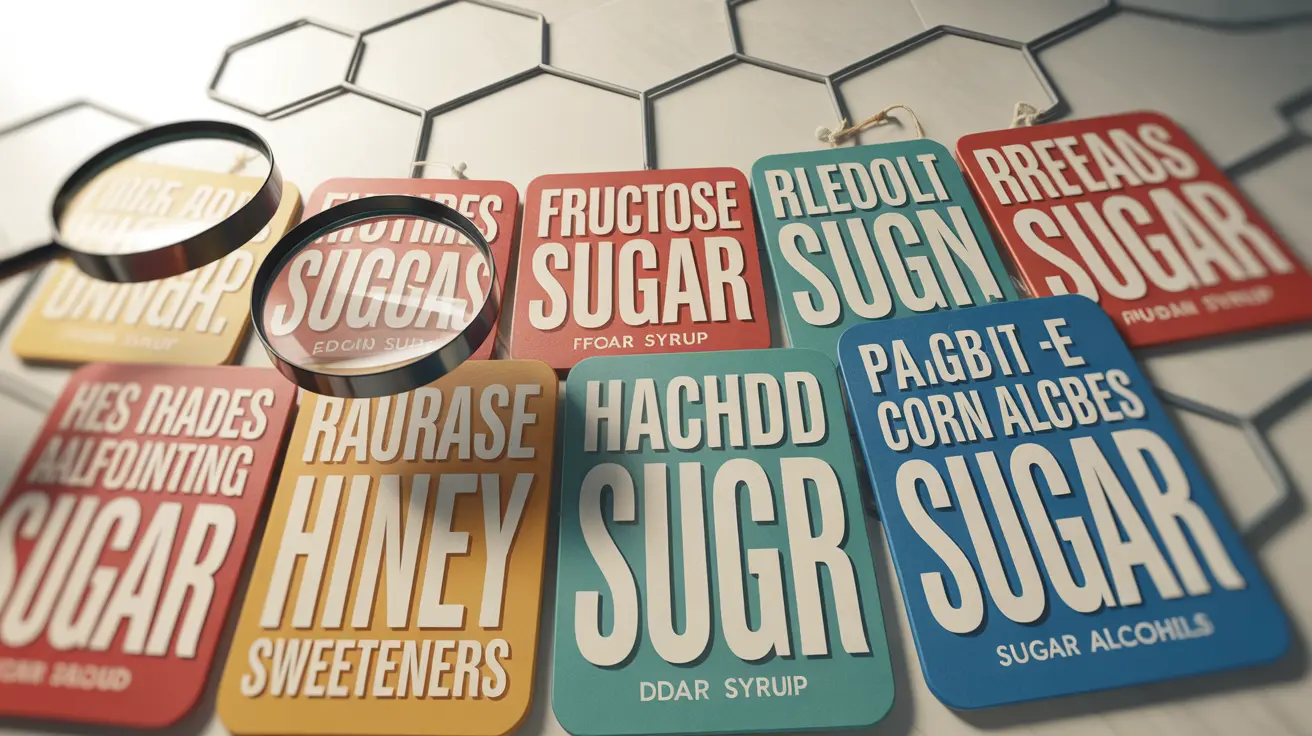When trying to maintain a healthy diet, understanding food labels is crucial. One of the biggest challenges consumers face is identifying added sugars, which often appear under various names on ingredient lists. Being able to recognize these different names for sugar can help you make more informed decisions about your food choices and better manage your overall sugar intake.
Food manufacturers frequently use multiple forms of sugar in their products, each listed separately on the ingredient label. This comprehensive guide will help you identify these hidden sugars and understand why they appear under different names.
Common Categories of Sugar Names to Know
Understanding sugar names becomes easier when you group them into distinct categories. Here's how to recognize the most common types:
Natural-Sounding Sugar Names
These sugars often appear healthier due to their natural-sounding names, but they affect your body similarly to regular sugar:
- Agave nectar
- Honey
- Maple syrup
- Coconut sugar
- Date sugar
- Fruit juice concentrate
Scientific Sugar Names Ending in "-ose"
These are typically found in processed foods and represent different forms of sugar molecules:
- Dextrose
- Fructose
- Glucose
- Lactose
- Maltose
- Sucrose
Syrup Variations
Various syrups are common sweetening agents in processed foods:
- High fructose corn syrup
- Rice syrup
- Malt syrup
- Golden syrup
- Carob syrup
- Corn syrup solids
Understanding Label Placement and Order
Ingredients on food labels are listed by weight, with the heaviest ingredients first. Manufacturers may use multiple types of sugar to prevent sugar from appearing as the first ingredient, even when the combined sugar content is significant. This practice makes it crucial to identify all forms of sugar when reading labels.
Impact on Health and Nutrition
Recognizing different names for sugar is essential for several health-related reasons:
- Blood sugar management
- Weight control
- Dental health
- Reducing inflammation
- Managing diabetes risk
- Controlling cardiovascular health
Tips for Reducing Hidden Sugar Intake
Use these practical strategies to minimize your consumption of hidden sugars:
- Read ingredient lists carefully
- Focus on whole, unprocessed foods
- Choose unsweetened versions of products
- Compare nutrition labels between brands
- Cook more meals at home
- Be especially vigilant with "low-fat" products, which often contain added sugars
Frequently Asked Questions
What are the most common alternative names for sugar listed on food ingredient labels?
The most common alternative names for sugar include high fructose corn syrup, dextrose, maltose, rice syrup, and fruit juice concentrate. These ingredients are frequently used in processed foods and should be monitored as part of your total sugar intake.
How can I recognize hidden added sugars in packaged foods to reduce my sugar intake?
Look for ingredients ending in "-ose" (like dextrose, fructose), various syrups (corn syrup, rice syrup), and natural-sounding sweeteners (honey, agave nectar). Check the ingredient list thoroughly, as multiple types of sugar may be used in a single product.
Why do food manufacturers use different names for sugar on labels instead of just listing "sugar"?
Manufacturers often use multiple sugar names to prevent sugar from appearing as the first ingredient, as ingredients are listed by weight. This practice can make products appear healthier than they are, as the total sugar content is split among different names.
What types of sugars end with "-ose" and why are they important to know?
Common "-ose" sugars include glucose, fructose, dextrose, maltose, and lactose. These are scientific names for sugar molecules and are important to recognize because they indicate added sugars in products, regardless of their chemical-sounding names.
How does knowing the many names for sugar help with managing health risks like diabetes and obesity?
Understanding different sugar names helps you accurately assess your total sugar intake, which is crucial for managing blood sugar levels, weight, and overall health. This knowledge enables you to make better food choices and maintain better control over your diet-related health risks.




